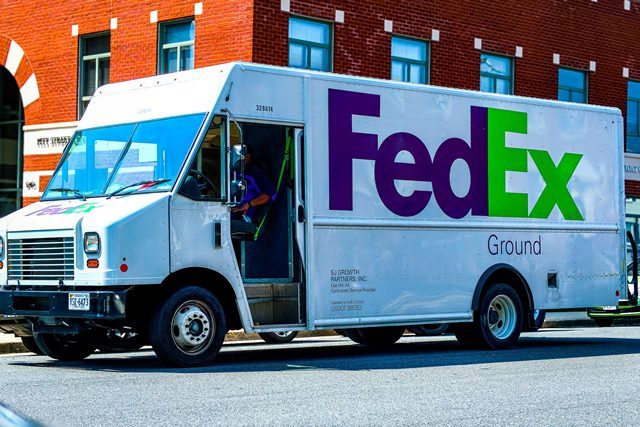While most people think of e-commerce logistics as order fulfillment (getting products to the customer), far fewer people consider the need for reverse logistics – how to deal with returns. According to Avison Young’s Global Head of Research, Dr. Nick Axford, for the last decade the headline story has been: “Online retail revolution. Massive boom in delivery and logistics”. This has led to significant development in in-house logistics networks of retailers, as well as in third party fulfillment. One of their key focuses has been on automation. Since logistics is extremely labour intensive, in an effort to increase margins, Amazon and other large retailers and fulfillment companies have been using technology to automate processes and reduce the high labor costs that are inherent in shipping and warehousing.
And while the industry is making inroads in cutting labor costs for order fulfillment, there is still a significant challenge facing the industry – one that often gets overlooked. Dr. Nick Axford maintains that while “last mile retail” (getting the product to the customer in a timely matter) gets the bulk of the attention, the key to logistics going forward, is the ability to deal with returns.
As e-commerce gains market share in retail, so too does the tendency of customers to over order. With traditional brick and mortar retail, people don’t order 7 different varieties of “shoes” with the intention of returning 5 of them. But with online retail, that’s exactly what’s happening. In some segments of online retail, according to Dr. Nick Axford, up to 40% of what gets bought ends up being returned. This creates a huge logistics problem for retailers because the product has to be reintegrated into the supply chain. Otherwise it gets wasted. And that’s a very labor intensive process – one more difficult to solve than for order fulfillment.
 With the growth of e-commerce leading to an influx of returns, products in reverse channels tend to eat up more far more resources than products in forward channels. Additional steps that include assessing, repairing, repackaging, relabeling, restocking, reselling, recycling and refurbishing, are labor intensive and can result in the cost of reverse logistics being much more expensive than delivery. So as e-commerce continues to grow, companies must respond accordingly or put themselves at risk of being overwhelmed by the volume of returns. Going forward, a huge determining factor in a company’s success (or failure), is how they deal with reverse logistics. And with the percentage of returns (per dollar of sales) also trending up, significant changes and innovations are required.
With the growth of e-commerce leading to an influx of returns, products in reverse channels tend to eat up more far more resources than products in forward channels. Additional steps that include assessing, repairing, repackaging, relabeling, restocking, reselling, recycling and refurbishing, are labor intensive and can result in the cost of reverse logistics being much more expensive than delivery. So as e-commerce continues to grow, companies must respond accordingly or put themselves at risk of being overwhelmed by the volume of returns. Going forward, a huge determining factor in a company’s success (or failure), is how they deal with reverse logistics. And with the percentage of returns (per dollar of sales) also trending up, significant changes and innovations are required.
What are a few of the innovations in reverse logistics that help companies maximize profits? A few of these include technological innovations like barcode scanners for data collection, blockchain for tracking and transparency throughout the product’s life cycle, predictive analytics and spatial planning for maximizing space in the warehouse. Others, as Dr. Nick Axford points out, are simply accepting the fact that logistics (particularly reverse logistics), is hugely labor intensive and thus requires a focus on attracting and retaining labor. This includes things like strategically locating fulfillment centers where there is an ample workforce, and incorporating wellness programs for employees.
How do you profit from the growing volume of e-commerce returns? Here are a few different ways…
Beat Your Competition At Returns
If you are running your own e-commerce site (or want to get started), and don’t want to be subject to the whims and low margins of FBA (just to benefit from their excellent logistics network), then there’s a solution. Thanks to a bundle of tools and services that all integrate seamlessly, providing first-class logistics and returns has never been easier. Now you can compete with the leaders in logistics (see below), and beat the overwhelming majority of retailers who are slow to adopt innovative reverse logistics practices.
The solution? If you’re an experienced online retailer, you’re already using an all-in-one e-commerce platform like Shopify, and have integrated it with a top order fulfillment service (we recommend ShipBob for shipping within the US). Great! Now you have the forward logistics covered. (As does your competition.) But to beat your competition, you have to take logistics one step further. You also need to integrate an return and exchange solution. Luckily, there’s now a reverse logistics service provider called Happy Returns that runs a network of over 700 Return Bars throughout the US where customers can quickly exchange and return goods – without printing or packaging. And even better, Happy Returns’ platform integrates seamlessly with ShipBob. Now, the trend of growing returns is transformed from a once daunting problem, into a significant advantage you’ll have over the competition.
Invest In Leaders In Reverse Logistics
Which companies are doing a good job implementing processes and new technologies that help deal with the growing trend in returns? Below we’ve outlined 7 companies. The first 2 are giants in retail with both the capital and foresight to tackle the challenges (and opportunities) surrounding reverse logistics. The subsequent 5 are logistics companies taking an innovative approach in helping their customers deal with reverse channels. As an added bonus – to help reduce geographical risk – all of these companies do business internationally, while 2 are based outside of North America.



